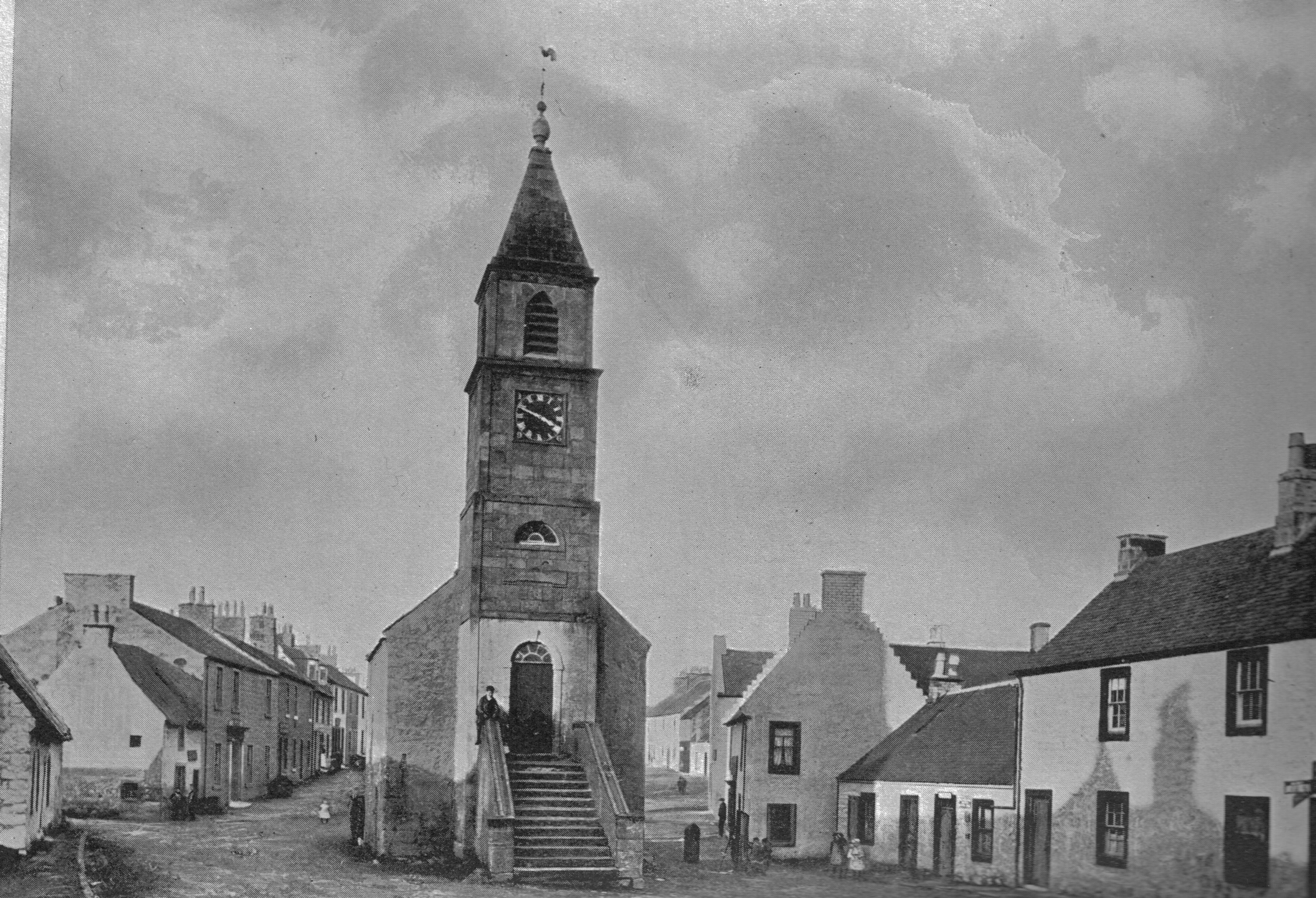|
Jougs
The jougs, juggs, or joggs ( fro, joug, from Latin , a yoke) is a metal collar formerly used as an instrument of punishment in Scotland, the Netherlands and other countries. Purpose The jougs was an iron collar fastened by a short chain to a wall, often of the parish church, or to a tree or mercat cross. The collar was placed round the offender's neck and fastened by a padlock. Time spent in the jougs was intended to shame an offender publicly. Jougs were used for ecclesiastical as well as civil offences. Some surviving examples can still be seen in their original locations in Scottish towns and villages. Jougs may be the origin of the later slang word "jug", meaning prison. Examples Sir Walter Scott rescued the jougs from Threave Castle in the Borders and attached them to the castellated gateway he built at Abbotsford House.Napier, George G. (1897). ''The Home and Haunts of Sir Walter Scott, Bart.'' James Maclehose, Glasgow. p. 153. In Stewarton, East Ayrshire, the joug ... [...More Info...] [...Related Items...] OR: [Wikipedia] [Google] [Baidu] |
Kilmaurs
Kilmaurs () is a village in East Ayrshire, Scotland which lies just outside of the largest settlement in East Ayrshire, Kilmarnock. It lies on the Carmel Water, southwest of Glasgow. Population recorded for the village in the 2001 Census recorded 2,601 people resided in the village It was in the Civil Parish of Kilmaurs. History Kilmaurs was known as the hamlet of Cunninghame until the 13th century.Groome, Francis H. (1903). ''Ordnance Gazetteer of Scotland.'' Pub. Caxton. London. P. 938.Tranter, Nigel (1965), ''The Fortified House in Scotland. V. 3. South-West Scotland.'' Pub. Oliver & Boyd. P. 40. The population in 1874 was 1,145. Alex Young suggested that the name Kilmaurs comes from the Gaelic meaning Hill of the Great Cairn.Young, Alex F.(2001). Old Kilmaurs and Fenwick. . Young’s suggestion for the Gaelic origins of the placename Kilmaurs is extremely unlikely. Earliest medieval records refer to an early medieval church dedicated to a saint (probably a Saint Maura) ... [...More Info...] [...Related Items...] OR: [Wikipedia] [Google] [Baidu] |
Stobo Kirk
Stobo Kirk is an ancient church of the Church of Scotland. It is dedicated to St Mungo and is situated near the B712 off the A72 just 6 miles south-west of Peebles in the ancient county of Peeblesshire, now part of the Scottish Borders Council area. History Early history It is believed there has been a church on the site of present-day Stobo Kirk since as early as the 6th century. St Kentigern, otherwise known as St Mungo, founded many churches during his time as Archbishop of the ancient kingdom of Strathclyde, and Stobo is believed to be one of his foundations. Stobo was originally the 'plebania' or mother church with subordinate chapelries or churches at Dawyck, Drumelzier, Kingledoors, Tweedsmuir, Broughton, Glenholm, and Lyne. Medieval times A new church, the ancestor of the present building, was built in the 12th century, but during the 15th and 16th centuries, the Scottish people were becoming weary of the rule of Rome. The church was becoming wealthy but the pe ... [...More Info...] [...Related Items...] OR: [Wikipedia] [Google] [Baidu] |
Scold's Bridle
A scold's bridle, sometimes called a witch's bridle, a gossip's bridle, a brank's bridle, or simply branks, was an instrument of punishment, as a form of public humiliation. It was an iron muzzle in an iron framework that enclosed the head (although some bridles were masks that depicted suffering). A bridle-bit (or curb-plate), about in size, was slid into the mouth and pressed down on top of the tongue, often with a spike on the tongue, as a compress. It functioned to silence the wearer from speaking entirely, and caused extreme pain and physiological trauma to scare and intimidate the wearer into submission. The scold's bridle was overwhelmingly used on women, often at the request of husbands or other family members. This prevented speaking and resulted in many unpleasant side effects for the wearer, including excessive salivation and fatigue in the mouth. For extra humiliation, a bell could also be attached to draw in crowds. The wearer was then led around town by a leash. ... [...More Info...] [...Related Items...] OR: [Wikipedia] [Google] [Baidu] |
East Ayrshire
East Ayrshire ( sco, Aest Ayrshire; gd, Siorrachd Àir an Ear) is one of thirty-two council areas of Scotland. It shares borders with Dumfries and Galloway, East Renfrewshire, North Ayrshire, South Ayrshire and South Lanarkshire. The headquarters of the council are located on London Road, Kilmarnock. With South Ayrshire and the mainland areas of North Ayrshire, it formed the former county of Ayrshire. The wider geographical region of East Ayrshire has a population of 122,100 at the last 2011 census, making it the 16th most populous local authority in Scotland. Spanning a geographical area of , East Ayrshire is the 14th-largest local authority in Scotland in terms of geographical area. The majority of the population of East Ayrshire live within and surrounding the main town, Kilmarnock, having a population of over 46,000 people at the 2011 census. Other large population areas in East Ayrshire include Cumnock, the second-largest town in terms of population and area, and ... [...More Info...] [...Related Items...] OR: [Wikipedia] [Google] [Baidu] |
Kirkcudbright Tolbooth
Kirkcudbright Tolbooth is a historic municipal building in Kirkcudbright in Dumfries and Galloway, Scotland. Built between 1627 and 1629 to serve the town as a centre of commercial administration, a meeting place for the council, and a prison, it was used for all these roles until the late eighteenth century when the council moved much of its business to new, larger premises they had constructed across the street; the tolbooth remained in use as a prison until the early nineteenth century, after which it remained in council ownership and was put to a variety of uses. Amongst the people incarcerated in the tolbooth during its use as a prison were people accused of witchcraft, and as late as 1805 it was used to imprison a woman convicted of pretending to be a witch. It was also used to imprison Covenanters during the Killing Time of 1679–1688; in 1684 a crowd stormed the building, killing a guard and freeing the Covenanters held within. American naval hero John Paul Jones was h ... [...More Info...] [...Related Items...] OR: [Wikipedia] [Google] [Baidu] |
Isle Of Cumbrae
Great Cumbrae ( sco, Muckle Cumbrae; gd, Cumaradh Mòr; also known as Great Cumbrae Island, Cumbrae or the Isle of Cumbrae) is the larger of the two islands known as The Cumbraes in the lower Firth of Clyde in western Scotland. The island is sometimes called Millport, after its main town. Home to the Cathedral of The Isles and the FSC Millport field study centre, the island has a thriving community of 1,300 residents. Geography The island is roughly long by wide, rising to a height of above sea level at The Glaid Stone, which is a large, naturally occurring rock perched on the highest summit on the island. There is a triangulation pillar nearby, as well as an orientation point which indicates the locations of surrounding landmarks. In clear conditions, views extend north over the upper Clyde estuary to Ben Lomond and the Arrochar Alps. To the west, the larger islands of Bute and Arran can be seen, while on the other side of Knapdale the Paps of Jura may be visible ... [...More Info...] [...Related Items...] OR: [Wikipedia] [Google] [Baidu] |
South Leith Parish Church
South Leith Parish Church, originally the Kirk of Our Lady, St Mary, is a congregation of the Church of Scotland. It is the principal church and congregation in Leith, in Edinburgh. Its kirkyard is the burial place for John Home (author of ''Douglas'') and John Pew, the man from whom the author Robert Louis Stevenson reputedly derived the character of Blind Pew in the novel ''Treasure Island''. The church has been repaired, used as an ammunition store and reconstructed but still retains the basic layout of the nave of the old church. History The church has a long history although most of the visible building is more recent. The church began as a chapel dedicated to St Mary which was erected in 1483 and dedicated in 1487. (From the twelfth century South Leith had been part of the parish of '' Restalrig'' and had no church of its own.) As part of the dedication King James III of Scotland gave 18 shillings to the kirk. The church was originally a large one, with nave, chancel, c ... [...More Info...] [...Related Items...] OR: [Wikipedia] [Google] [Baidu] |
Abernethy, Perth And Kinross
Abernethy ( gd, Obar Neithich) is a village in Perth and Kinross, Scotland, situated south-east of Perth. Etymology Abernethy, recorded in the 10th century as ''Aburnethige'', means 'mouth of the river Nethy'. The first element of the name is the Pictish word ''aber'' 'river mouth'. The river-name Nethy is from the Celtic root ''nect''- 'pure, clean'. The Nethy Burn flows down from the Ochil Hills past the present village. The Gaelic form of the name is Obar Neithich and derives from the same roots as the English name. History The village was once the "capital" (or at least a major religious and political centre) of the kingdom of the Picts. The parish church, which sits on land given by Nechtan, king of the Picts, is dedicated to Saint Brigid of Kildare of (fl. 451–525), and the church is said to have been founded by Dairlugdach, second abbess of Kildare, one of early Christian Ireland's major monasteries. Abernethy was the site of the Treaty of Abernethy in 1072 between ... [...More Info...] [...Related Items...] OR: [Wikipedia] [Google] [Baidu] |
Eckford, Scottish Borders
Eckford is a small village located between the larger towns of Kelso and Jedburgh in the Scottish Borders. The village is in close proximity to both the River Teviot and its tributary the Kale Water, and the A698 and the B6401 which run approximately parallel to the respective rivers. The village itself consists of around 20 houses, situated off Eckford road, the minor Well road and the historic drove road, the Loaning. Eckford Village Hall The village hall was built in 1930, funded primarily by local subscription and fund raising, and sits in the heart of the village, and is its last remaining public building (previously there was also a school (1963), post office and shop). The hall remains an important hub within the village and hosts events throughout the year. Eckford Parish The parish of Eckford consists of Caverton, Cessford and Eckford. *Caverton comprises Caverton Mill (by the Kale), Old Caverton, Caverton Hillhead, and Caverton Mains. * Cessford comprises Cessford ... [...More Info...] [...Related Items...] OR: [Wikipedia] [Google] [Baidu] |
Duddingston Kirk
Duddingston Kirk is a Parish Church in the Church of Scotland, located adjacent to Holyrood Park in Duddingston Village, on the east side of the City of Edinburgh. Regular services are held at the kirk, conducted by the minister, Rev Dr James A. P. Jack (from 2001). History Cassel identifies the building as being Anglo-Saxon (i.e pre Norman conquest). The church was built in or around 1124 by Dodin, a Norman knight, on land granted to Kelso Abbey by King David I of Scotland. As originally built, the kirk consisted of the chancel, nave and square tower. The traditional pattern of an east–west axis was adopted. The original entrance on the south wall includes a particularly fine example of Scoto-Norman stone carving, with a round-topped doorway. Following the enlargement of the parish boundaries, the Prestonfield Aisle was added in 1631. This consists of a gallery, downstairs area and burial vaults were on the north side. In 1968 the kirk’s interior was reconditioned, with ... [...More Info...] [...Related Items...] OR: [Wikipedia] [Google] [Baidu] |







.jpg)